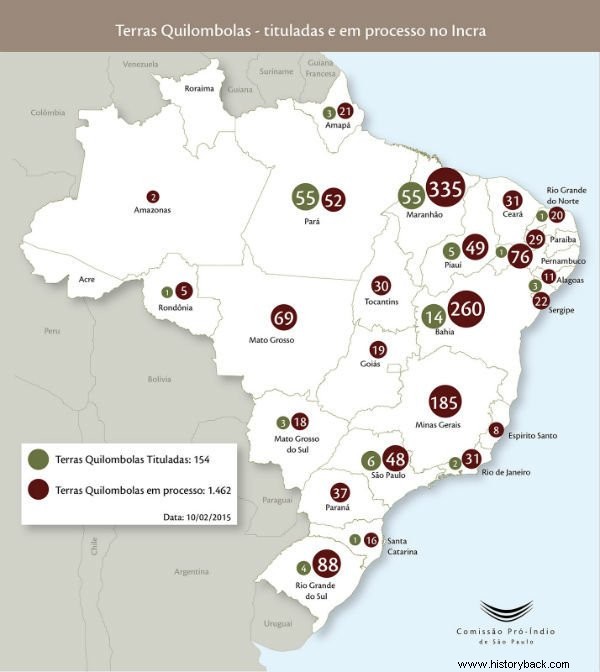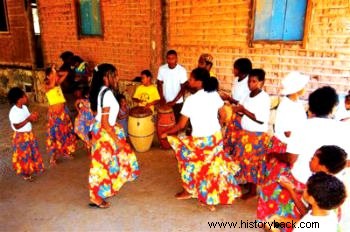Quilombos they were communities formed by slaves who had run away from the plantations.
These places became centers of resistance for black slaves escaping from forced labor in Brazil.
Origin
The word quilombo comes from the Bantu language, being a reference to "forest warrior".
The first definition of quilombo in the colonial administration took place in 1740. It was made by the Portuguese Overseas Council. For this institution, the quilombo was:
What was life like in the Quilombo?
The functioning of the quilombos considered the tradition of the runaway slaves who inhabited them. In these communities, diverse activities were carried out such as agriculture, extractivism, animal husbandry, mining and commercial activities.
In these places, blacks tried to revive their African traditions. Best of all, they could be free again, worship their gods and practice their dances and songs.
However, they did not forget the companions who were enslaved. It was common for them to help organize escapes on the plantations or save the money they obtained from the sale of their products to buy the freedom of those slaves.
The existence of quilombos was such that a specific profession was created in Brazil called "capitães do mato ". They were knowledgeable forest men hired to recapture the runaway slaves.
The process of resistance was permanent. Even when destroyed, the quilombos reappeared in other places and were another peculiarity of Brazilian slave society.
Quilombo dos Palmares
Historians report conflicts of blacks who fled to Palmares as early as the beginning of the 17th century. The first expedition in search of runaway slaves took place in 1612.
In 1640, there were nine villages in Palmares:Andalaquituche, Macaco, Subupira, Aqualtene, Dambrabanga, Zumbi, Tabocas, Arotirene and Amaro.
The process of persecution of Quilombo dos Palmares was accentuated with the expulsion of the Dutch. In 1670, the Portuguese began to attack the villages systematically. In 1694, the quilombo was destroyed, with the death of its last king, Zumbi.
Read more at Quilombo dos Palmares.
Zumbi dos Palmares
Zumbi dos Palmares was a black leader who was born in the State of Alagoas in 1655. He is considered a symbol of resistance for having been the last king of Quilombo dos Palmares, the largest in Brazil.
Zumbi's given name was Francisco. He was born a free man and only at the age of 15, after being catechized in the Catholic Church, he decided to live in Quilombo dos Palmares.
He died in 1695, on the 20th of November. Today, this date is remembered as Black Consciousness Day and is even a public holiday in some Brazilian states.
Quilombos in Brazil
 Map of Brazil showing the quilombo lands titled and by titleholder. Year:2015
Map of Brazil showing the quilombo lands titled and by titleholder. Year:2015
Although Quilombo de Palmares is the most famous and has entered the history of Brazil, there were quilombos in practically all Brazilian states.
Many of these places have resisted infinitely and their residents are now called remnants of quilombo communities. They are the children and grandchildren of the groups that managed to survive.
Remaining Quilombo Communities

Girls practice jongo at Quilombo do Campinho in Paraty/RJ
It is estimated that there are around three thousand quilombola communities in Brazil today.
The inhabitants of these regions often live in a precarious situation. However, they still preserve traditions of their ancestors such as jongo, lundum, desfeiteira, handicrafts and cooking and cultivation techniques.
Likewise, they are not frozen in time and play football, dominoes and listen to current music. They interact with the non-quilombola neighborhood and thus congregate with the community in the feasts of saints.
The claim for ownership of land by quilombolas was incorporated into the 1988 Constitution. Article 68 of the Magna Carta provides for the recognition of land ownership of the remaining quilombo communities.
This process has no deadline for completion and few communities have obtained the property title.
- Slavery in Brazil
- Slavery
